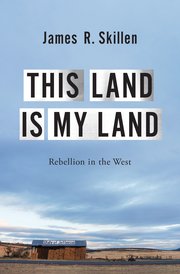The Science and Politics of Global Climate Change: A Guide to the Debate, 3rd Edition
Reviewed by Dr. Yasmin Zaerpoor, Boston College
Why is collective action on climate change so difficult to achieve, despite the overwhelming scientific consensus that the climate is changing?
The Science and Politics of Global Climate Change: A Guide to the Debate, 3rd Edition, by A. E. Dessler and E. A. Parson, Cambridge University Press, 2020, 278 pp.
Our global response to climate change remains insufficient despite regular, and increasingly urgent, warnings from the scientific community about the global impacts, especially if warming exceeds 1.5°C. Although there is some uncertainty about the extent to which our natural world will change as a result of the climate changing, there is wide scientific consensus that the climate is changing. The existing challenge is therefore not related to knowledge, but to knowing how to translate that knowledge into political action.
In this third edition of The Science and Politics of Global Climate Change, A. E. Dessler and E. A. Parson masterfully consider the interaction science and politics as it relates to climate action. They outline three factors that make climate change more difficult to address than previous environmental challenges. First, climate change is a slow process that requires long-term planning, which is not immune to changes in local and national politics. Second, they highlight the tradeoff between environment and economics, noting that the necessary reduction in greenhouse gas emissions will require transitioning away from fossil fuels and may have, at least short-term, impacts on economies around the world. Third, uncertainty about the impacts of climate change makes it easy to misunderstand and miscommunicate the seriousness of the problem.
Chapter One starts by introducing the science of climate change and, more specifically, describing climate, the Earth’s energy balance, the greenhouse gas effect, the role of feedbacks and climate forcings, and the impact of humans on the climate. It also provides a brief overview of climate change policy, starting from the late 1980s and 1990s through the 2015 Paris Agreement (and the United States’ temporary withdrawal under Donald Trump).
Chapter Two summarizes the scientific and political debates on climate change, their differences and how they interact. Interestingly, Dessler and Parson approach this by differentiating between positive and normative statements made in the climate debate, describing the scientific process as a collective endeavor with peer review rather than an abstract, rational process, and by highlighting the potential conflict that emerges when science is used/misused to support contradictory political positions. This is a very thoughtful approach to the climate debate as it extends beyond the science and introduces readers to the complexity of integrating science into policy.
Chapter Three, which focuses on the impacts of humans on the climate, is organized around four questions: (i) Is the climate changing? (ii) Are human activities responsible? (iii) What further climate changes are likely? and (iv) What will the impacts be? Dessler and Parson also consider natural processes (e.g., tectonic processes, variations in Earth’s orbit, solar variability and internal variability of the climate system) that affect climate, but explain that these do not explain the extent to which the climate is changing. They end the chapter by considering, and rebutting, two contrary claims for anthropogenic climate change. More specifically, they explain and dismiss the misinformed and pervasive counterarguments that global warming is not happening and that the climate has always changed and therefore should not be a concern.
In Chapter Four, Dessler and Parson turn to climate change action–focusing on mitigation, adaptation and climate engineering. In each of these discussions, the politics surrounding the feasibility of future action is considered alongside the science. For example, they point to nuclear power as a significant potential zero-emission source of energy, while also recognizing the existing political opposition to nuclear energy and the risk that expanding fission could lead to increased opportunities for “sabotage, terrorism, or diversion for weapons.” They also consider subnational, national and global policies that could promote mitigation, weighing the benefits and limitations of different types of policies (e.g., market-based policies such as cap and trade systems versus regulatory policies) before describing two possible approaches to climate engineering, or the act of manipulating the climate system to reduce the impacts of greenhouse gases. They conclude the chapter with a recognition that effective climate action will require all three interventions–mitigation to reduce the effects of climate change, adaptation to reduce the impacts and continued study of climate engineering in case the first two interventions are insufficient.
The final chapter summarizes climate policy in 2019 and outlines a path forward. Interestingly, the authors warn against waiting for global consensus on climate change and suggest that piecemeal national and subnational mitigation may be the best we can hope for in today’s political climate.
This book is an excellent teaching resource–whether it is for an undergraduate or graduate course or for nonspecialists who want to understand how science and politics interact in relation to climate action. It is structured intuitively as though the authors have anticipated the questions and follow-on questions that students of climate change will ask, and answer them comprehensively and succinctly. Overall, it is an easy, engaging, and comprehensive primer for anyone trying to understand the challenges and opportunities for action on climate change.





